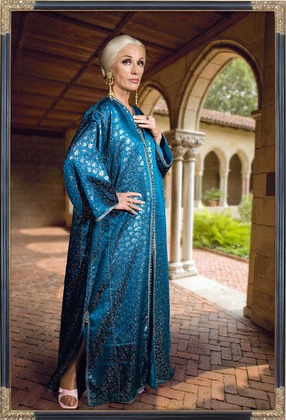Asher Kelman
OPF Owner/Editor-in-Chief

Cindy Sherman. Untitled #466. 2008. Chromogenic color
print, 8' 1 1/8 x 63 15/16" (246.7 x 162.4 cm). The Museum
of Modern Art, New York. Acquired through the generosity of
Robert B. Menschel in honor of Jerry I. Speyer.
© 2011 Cindy Sherman
"Since one critic has already deemed Cindy Sherman “the successor to Cézanne, Picasso, Pollock and Warhol,” I feel I am free to delve into other things. The headline to his preview panegyric was The Last Star, so one of these days I will have to write a pithy essay explaining why we don’t need any more stars, thank you; and the last great artist is me. The need for heroes or heroines is perennial, even in something as pure and as uplifting as art. Upon the occasion of the must-see retrospective now at MoMA until June 11, another critic announces that Sherman’s career is the first of a woman artist that resembles those of Picasso, Johns and Bruce Nauman. However, I will go all out and say that Sherman’s 2008 “Society Lady Portraits” are as good as, if not better than, her career-making “Untitled Film Stills” (1977-80). She has avoided the male slump, which I define as the usual decline of male “upstarts” who are inspired and then should be retired. But no names here; you can fill in the blanks." Read the entire article here
Read the article (and if you can go visit the retrospective of Cindy Sherman's work at MOMA in New York which is on until June 11th 2012). Even if you cannot vista, you must have seem a lot of her work. It fetches $millions and is prized by collectors. So what makes her work so special to us. Can you share your ideas on how her importance has come about and what its based on.
Asher
